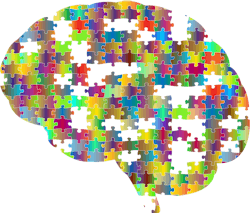Reducing inflammation boosts cognitive recovery after stroke and may extend treatment window
Reperfusion therapy, the gold standard for stroke treatment, helps restore blood flow after a stroke caused by a clot, preventing loss of brain tissue. However, only about 10 percent of stroke patients qualify, in part because of reperfusion therapy’s narrow treatment window.
A recent Medical University of South Carolina (MUSC) study suggests that this therapy could be both safer and more effective for both motor and cognitive recovery if administered with a specialized compound that blocks the immune response. The team’s preclinical findings, reported recently in the Journal of Neuroscience, suggest that reducing the immune response in the brain could be a strategy for improving cognitive recovery. It could also extend the treatment window for therapy, allowing stroke specialists to help many more stroke patients.
“With reperfusion therapy, we're restoring the blood flow, which is necessary to save the tissue, but there is an ongoing inflammatory response by the immune system that is not targeted by reperfusion,” said Stephen Tomlinson, Ph.D., interim chair of the Department of Microbiology and Immunology at MUSC and senior author of the article.
This could explain why, though mechanical reperfusion has a success rate of 90 percent in returning blood flow to the brain, only about 40 percent of treated patients recover enough motor and reasoning skills within three months to tend to their daily needs independently. Even those who do recover motor function can still struggle with cognitive challenges months later.
During a stroke, the oxygen and energy supply to the brain is cut off by a clot, causing brain tissue to become stressed and die rapidly. Just as it is with a cut to the knee, the immune system is activated to heal the wound, which includes clearing the dead tissue. A family of special immune proteins called complement proteins help to guide and promote this immune response in the damaged areas.
Therefore, Tomlinson and his team developed a complement protein blocker, named B4Crry, which acts only at the site of stroke injury. This compound blinds the complement proteins to the signals of stressed brain cells, saving the stressed tissue and reducing overall brain damage in a preclinical stroke model.
In the current study, the researchers hypothesized that pairing reperfusion therapy and B4Crry would significantly improve stroke recovery beyond reperfusion therapy alone. In particular, they hypothesized this combination treatment would improve cognitive recovery.
As Tomlinson’s team expected, reperfusion therapy alone did improve recovery of coordinated movements such as walking in a preclinical model of stroke. With the addition of B4Crry to treatment, coordinated movement improved even faster, with greater recovery seen as early as three days after the stroke. The improvements to learning and memory were even greater than those seen with motor functions.
Reperfusion therapy alone was equal to no treatment at all for learning and memory recovery after stroke. However, when B4Crry was added to their treatments, mice had greatly improved cognitive recovery, making three times fewer errors on a learning and memory task. Tomlinson’s team at MUSC is also testing the potential for complement inhibitors in other brain injuries, such as traumatic brain injury.

